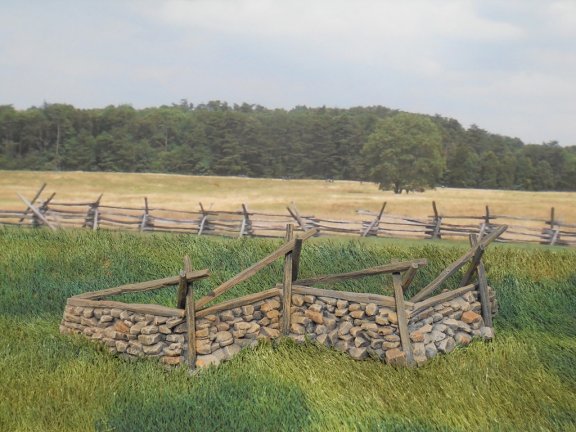




 2
2




Anybody ever hear of a solid zigzag foundation for a rail fence like this -- OR any other possible explanation for a stone zigzag in the middle of the woods?
especially since having that bottom rail lying directly on the stone would make it rot faster in wet weather that if it had air space beneath it.




Jay C. White Cloud wrote:
Anytime you have such a structural artifact...we are only certain to a percentage and that can never really be 100% without direct pictorial or literal explanations someplace in the historic records of a region. What I can share from years of helping restore them and studying them in places like "Lincoln Log Cabin State Park" in Illinois (et al) is that "Shadow Stones" are common to a wide belt from the Ozarks all the way to Pennsylvania. Not all "Split Rail" just had big stone. Many became the repository for collected stone in near by fields that followed the pattern of the Split Rail Fence above. After the wood had past with time and/or moved...the "Shadow Stones" remain as a testament to its existence...
Jay C. White Cloud wrote:
Each region has it's subtle differences in style. Some are just a zig-zag of pile small stones and some are more elaborate, with either a true Ashlar or Herring bone lay to the stone. Even an elevation gain of only 200 mm (~8 inch) will extend the lifespan of most "split rail" species of wood a full century before needing replacement...Perhaps even longer. Wood on stone is actually much less likely to facilitate rot than ground contact, as the wood indeed gets wet, yet can rapidly dry out after the wet weather had passed...Much more so than if just resting on or near soil where "splash up" can take place. There is even the habit in some regions of burying the bottom rail in the stones himself there by "stiffening" the fence above. This "ballast stoning" acts like a foundation and anchor to the fence above.




If so, those stones may have served to preserve a boundary line between adjoining properties if rails were sometimes washed away by flood. If the bottom rail were weighted as well, it might have helped to preserve the entire fence if the flooding was not too severe. What do you think?
 1
1





Success has a Thousand Fathers , Failure is an Orphan
LOOK AT THE " SIMILAR THREADS " BELOW !




 ...
...
|
In the renaissance, how big were the dinosaurs? Did you have tiny ads?
The new purple deck of permaculture playing cards
https://www.kickstarter.com/projects/paulwheaton/garden-cards
|







